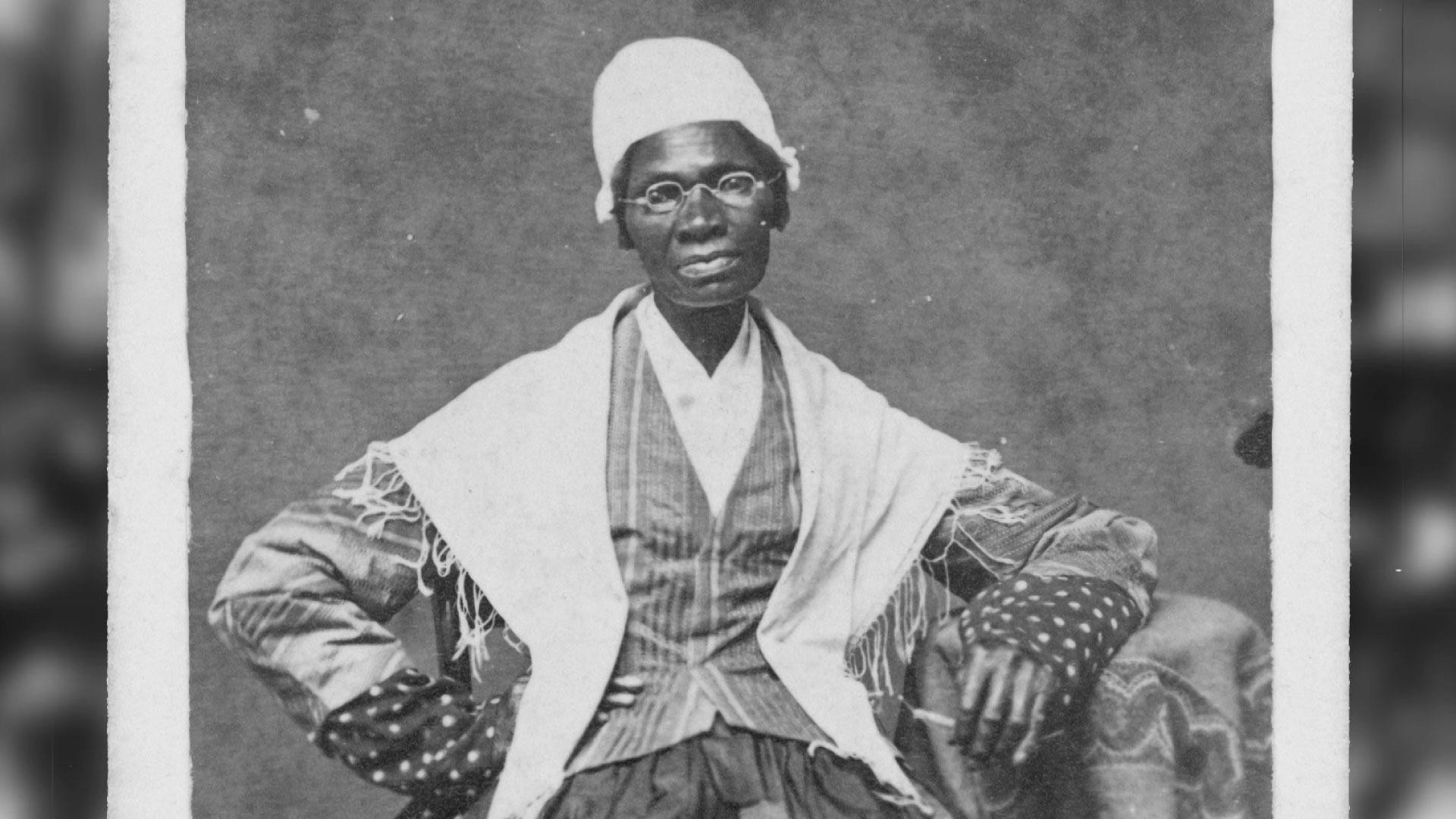Sojourner Truth
Sojourner Truth was an abolitionist and advocate for civil and women’s rights in the 19th century. She was born Isabella Baumfree in 1797 in Ulster County, New York, and spent the first 28 years of her life in slavery. In 1826 she escaped with her baby daughter to the home of some abolitionists (Isaac and Maria Van Wagenen), but was forced to leave some of her other children behind. When her former master sold her son to someone in Alabama, Truth successfully sued and gained custody of her son, becoming one of the first Black women in America to win a case against a white man.
Though she had already become a devout Christian some years earlier, in 1843 Truth became a Methodist and took on the name Sojourner Truth to reflect the fact that she felt it her duty to travel and spread the truth. Over the next decade, Truth met other abolitionists like Frederick Douglass and William Lloyd Garrison, as well women’s rights champions like Elizabeth Cady Stanton and Susan B. Anthony.
Truth’s first language was Dutch, and she never learned to read Dutch or English, but she dictated her memoir. Abolitionist William Lloyd Garrison published her autobiography, The Narrative of Sojourner Truth: A Northern Slave in 1850.
In 1851 Truth delivered her famous “Ain’t I a Woman Speech,” at the Ohio Women’s Rights Convention in Akron. In it she reminds her audience of her status as a woman and a free African American. Many white women’s suffrage advocates of the era ignored or dismissed the rights of non-white women, while some advocates for the enfranchisement of Black men believed that all men should have the right to vote before any women did. Truth’s speech reminds men in the audience who might argue that women are too delicate to vote, that she too is a woman and has done harder physical labor than any of them.
How does Truth’s speech confront her audience’s assumptions about race and gender identity?
How does she bring in textual evidence (biblical in this case) to support her claims?
